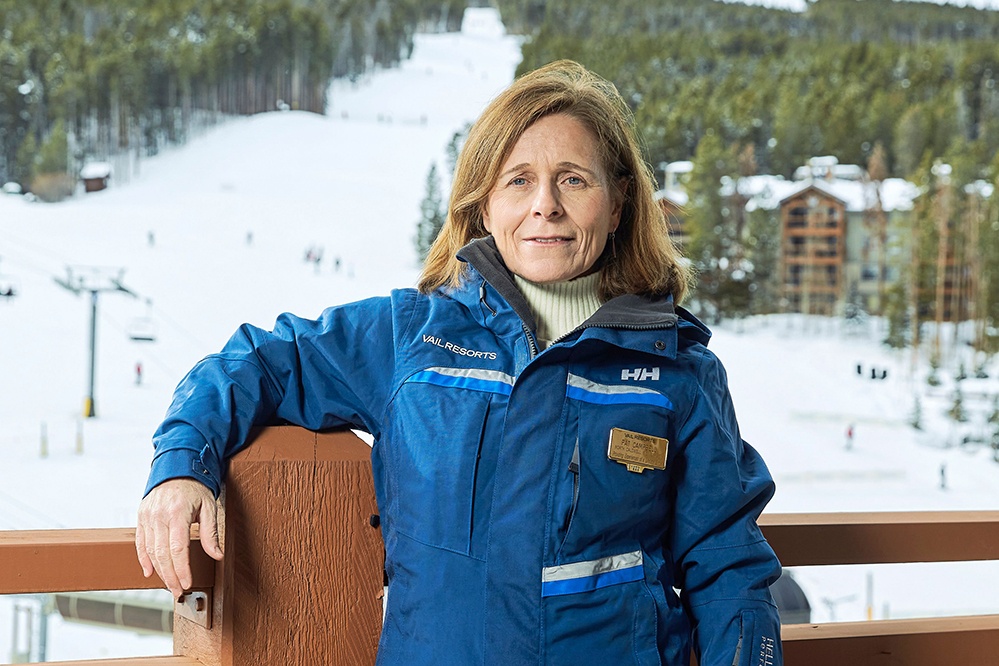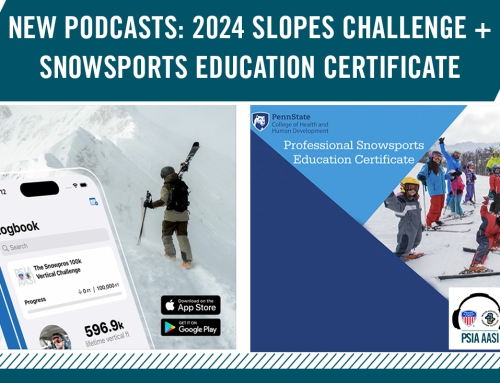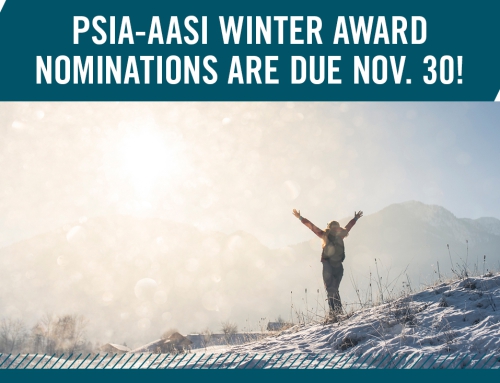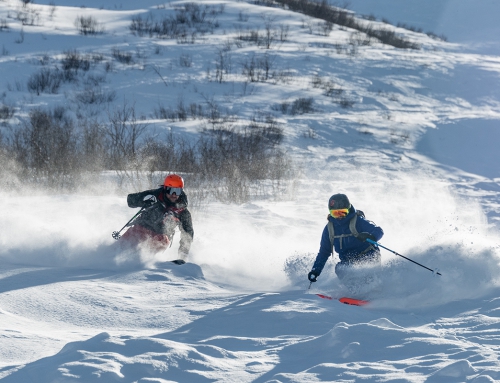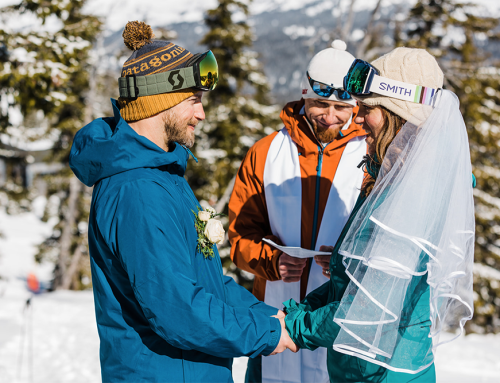32 Degrees: Pat Campbell’s Professional Journey
View this article, by Peter Kray, that originally appeared on page 36 in the winter 2021 issue of 32 Degrees magazine.
When Pat Campbell decided to take a job as a ski instructor for a season pass and the opportunity to work outdoors, she probably didn’t anticipant how it would lead to her overseeing operations at one of the world’s greatest collections of mountain resorts.
Campbell got her start in the snowsports industry as a ski instructor at Wyoming’s Jackson Hole Mountain Resort in 1985. She quickly earned a spot as one of the snowsports school supervisors before moving over Teton Pass to work as ski school director at Grand Targhee and later joining Vail Resorts as director of the ski school at Breckenridge in 1999.
Campbell was senior vice president and chief operating officer of Keystone Resort for three years, then took on the role of executive vice president and chief operating officer of Breckenridge Ski Resort in 2009. In August 2015, she was appointed president of Vail Resorts’ mountain division and currently oversees operations at the company’s 37 world-class resorts and urban ski areas across 15 states and three countries.
How did you get started in ski instruction?
I moved to Jackson with a friend after college when I wasn’t really sure what I wanted to do, we both decided to try out for ski school – it seemed like the best fit for a job that would also provide me with a ski pass.
While teaching, what were some of the early things you learned about working with groups, managing expectations, and overcoming obstacles?
The importance of meeting people where they are and understanding that everyone shows up with different expectations and mindsets. You need to adjust your approach in order to connect for maximum impact.
Agility is important in so many aspects of life, not simply the physical balance that keeps you upright but also your ability to react and pivot to changing conditions and unpredictable events – like weather and snow conditions on a spring day, for instance.
It’s also important to recognize that shared experience and personal connection are more important than who is the best skier.
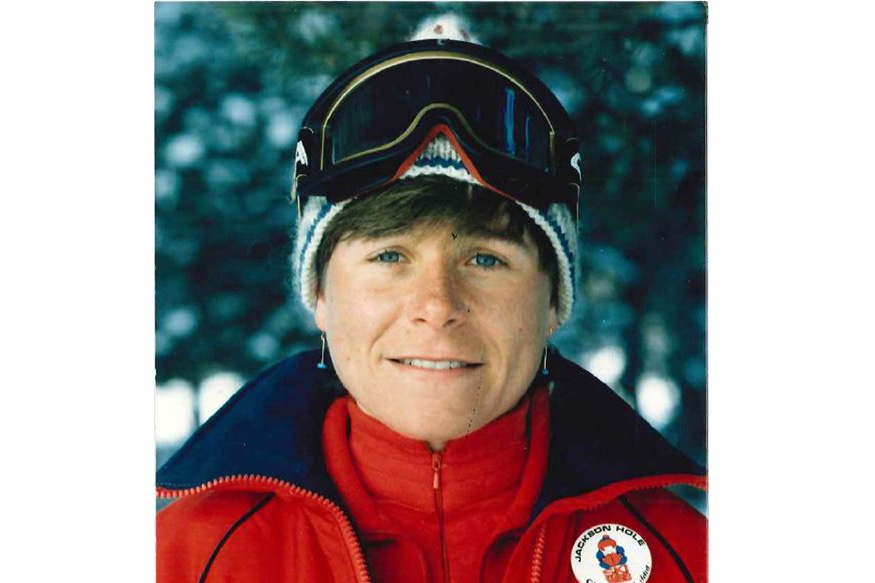
Do you have a timeline of how you started accepting new responsibilities, especially with regard to managing lesson splits, kids or adult classes, and other instructors?
Toward the end of my first season, I started helping out with organizing and supervising the children’s lesson program, which evolved into a full-time supervisor role in subsequent years. After 10 years of engaging in many different aspects of ski school management, I landed my first ski school director role at Grand Targhee in 1995 and subsequently moved on to Breckenridge and Vail Resorts in 1999.
What other kind of work were you doing when you weren’t teaching, whether in the evening or the offseason, and how did that help you grow professionally?
Like most frontline resort employees, I had a second job in the winter working two nights a week at Calico Pizza on Teton Village Road and in the summers worked for Charlie Sands Whitewater Rafting.
At Calico, I learned a lot about community and giving back. The owner, John Becker, was very engaged in the community; he really cared and that showed in how he ran the business, how he gave back to the community, how his customers felt, and how he treated his employees.
At Sands, I had a chance to be really engaged in managing the business. Everything from logistics, sales and overseeing employees to creating operational standards for the office and managing daily finances. Charlie placed a lot of trust in me and I felt very empowered and rewarded for my contribution.
As you were promoted to supervisor, then director, how did you build your management skills?
I gained my management skills mostly by trial-and-error. And there were plenty of errors. We didn’t have the benefit of the kind of training and development that most companies have today. When I look back, I feel fortunate to have had the patience of those I worked with during my development as a leader. I’ve also had the opportunity to work with some really terrific leaders; role models and mentors who really influenced my leadership journey.
How would you describe what you do now?
Everything I do should ultimately create experiences of a lifetime for our guests and employees. I just do it less directly than when I was teaching skiing or working in a resort; I have to do it now through leadership in a large, complex organization. It’s still very rewarding, though in a different way. In the end it’s trying to have a positive impact on the people you work with and our guests through leadership. And I still get to have direct impact with our guests and employees every time I visit a resort.
How does your teaching experience continue to inform the work you do?
It keeps me grounded in what we really do; providing experiences that enrich people’s lives. It also gives me a lot of perspective on the incredible work our employees deliver every day at the resorts.
What are the key issues and opportunities in your daily role?
- Safety is foundational to everything we do and top of mind every day. Our employees and guests place their trust in us to create and maintain a safe environment.
- Partnering in our communities to support the unique local culture and critical organizations that keep our communities sustainable and healthy.
- Growing a high-performing team that can execute on our vision today and into the future.
- Financial stability and sustainability, executing on our strategy, and taking a long view and sticking with the plan.
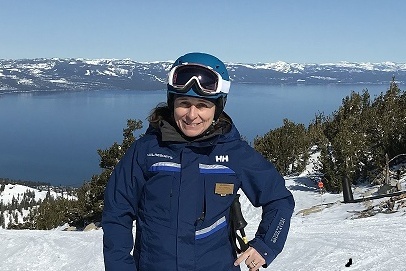
What keeps you up at night?
Lots of people rely on our company to be successful – our employees and communities depend on that success for a sustainable future. I never take difficult decisions lightly, knowing there could be broader implications for our stakeholders.
Looking back, how did your work as an instructor set the stage for what you do now?
Becoming an instructor enabled me to grow and develop doing something I have passion for and allowed me to make a life in the mountains and the outdoors. Teaching provides a path to grow your skills and achieve results in a very tangible way – whether by seeing your students make progress and become more confident and able to fully enjoy the mountain experience or achieving your own personal growth through training, certification, and career progression. Being an instructor also gave me the opportunity to explore, and then decide that I wanted to be around skiing and mountain communities as a lifestyle and career.
Do you have any advice for instructors who want to use their work as a teacher to take their careers in new directions?
It’s okay to be ambitious and take risks, try new things, get out of your comfort zone. The best path isn’t always linear; you can learn so much by making a lateral move and trying something new.
You’ve outlined directions instructors can take in the snowsports industry; what are important directions the industry itself can take?
One of the most important opportunities within the ski industry involved inclusion and diversity. It’s critical to growing snowsports and being relevant and sustainable. The industry can often be perceived as elitist, cliquish, and unwelcoming to new participants. We need to find new ways to shift and open up, welcome people not exactly like us, and provide a comfortable place for them in this amazing experience – no matter where they’re from and who they are.

